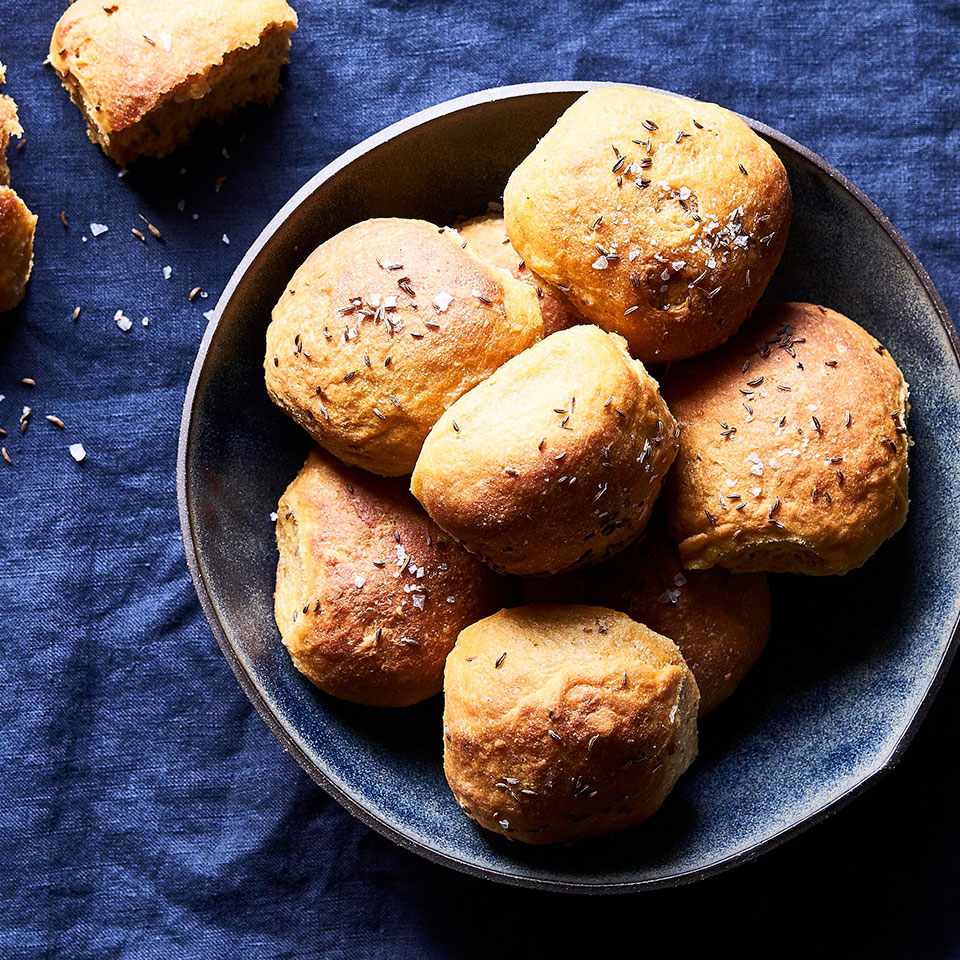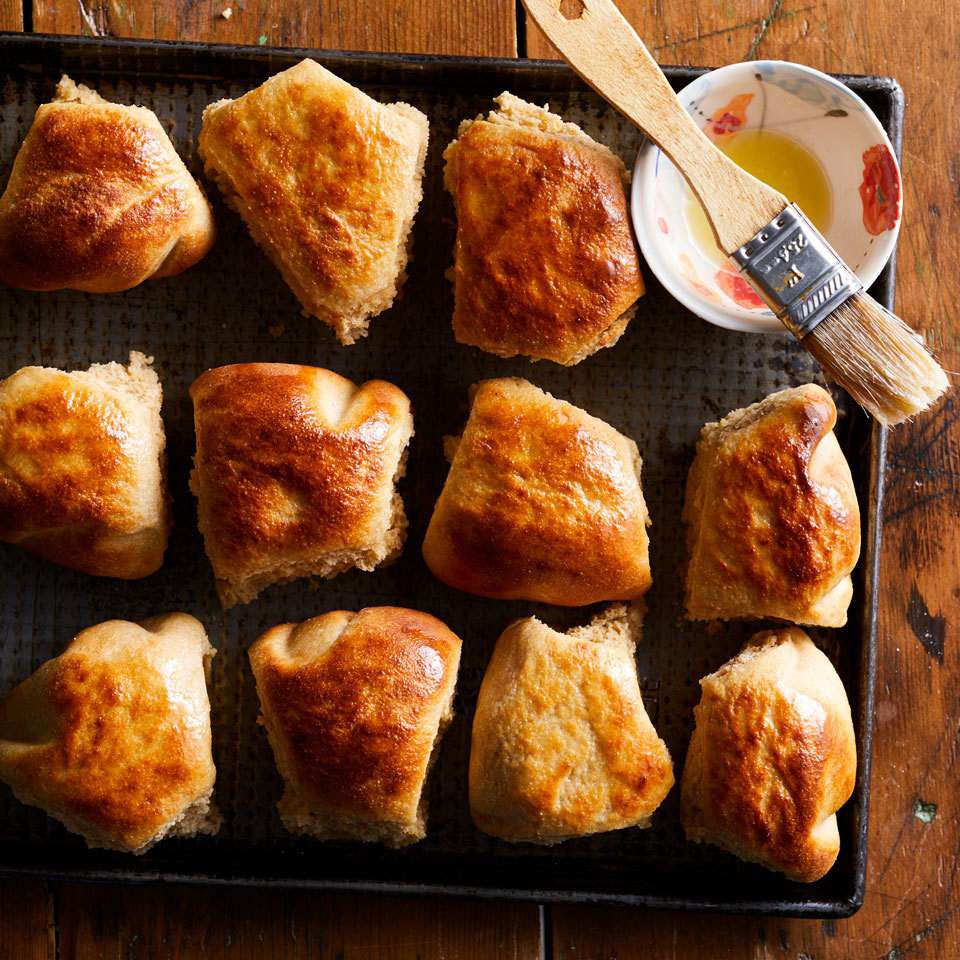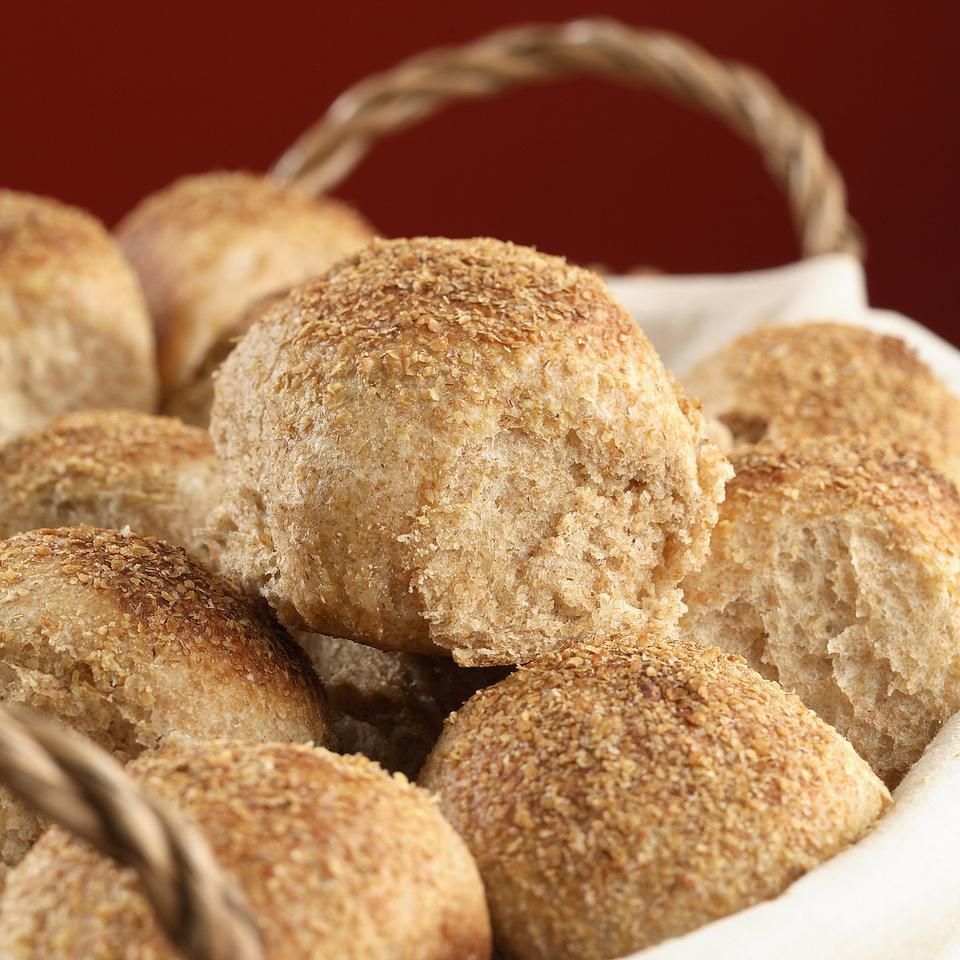Trying your hand at homemade dinner rolls for a meal? Good for you! You won't be disappointed. We think they're easy (and delicious), but if working with bread dough while juggling the rest of your meal sounds tricky, don't worry—we've got you covered. We've highlighted a few common pitfalls and ways to avoid them so you can look forward to sopping up the last bits of gravy and mashed potatoes from your plate with your own homemade dinner rolls!
Mistake to Avoid #1: Dough That Doesn't Rise

You've been waiting hours and your dough hasn't changed. What gives? A few things could be going wrong. Let's start with the yeast. Yeast has a "use by" date. As it moves beyond that time, it loses its oomph. Check the date printed on the package to make sure it's within its usable life. If you're still not sure and have some to spare, check its vitality by adding some yeast to lukewarm (not hot!) water combined with a little bit of sugar in a small bowl. If the yeast is still active, it will begin to foam near the top of the bowl after it dissolves. If not, you have reason to be suspicious that your yeast needs to be retired.
Another reason for your dough not rising? Too much salt. While sugar activates yeast, salt has the opposite effect. Some salt is OK, but if you accidentally added too much, it may be slowing down the rise. There's not much you can do short of starting over if you run into either of these issues, but if your yeast is OK, and the dough isn't oversalted, it could be as simple as moving your dough to a warmer location. Yeast works best when it's good and muggy. Near (but not in) a warm oven is a good spot—and be sure to keep the dough covered with a kitchen towel to lock in moisture.

Mistake to Avoid #2: Tough Dinner Rolls

Do your dinner rolls resemble shoe leather? Too much flour, or not the right kind, could be to blame. Dough made only from flour with a high or even average amount of protein (like bread flour or all-purpose flour) can become tough from overmixing. Protein gives bread structure in the form of gluten—the more you mix and move the dough, the more gluten you get. You need some structure, but not so much that you can't bite through your bread. Adding a lower-protein flour (like pastry flour or cake flour) can act as a safety net against overmixing. If your dough feels firm and unpliable, let it rest. Stopping the mechanical action of kneading and mixing will relax the dough, giving you a better shot at a more tender result.
Mistake to Avoid #3: Dough That's Hard to Shape

Perfectly round dinner rolls start with a workable dough. What makes a workable dough? One that's not too sticky, not too dry and not too springy. Sometimes dough can surprise you—it looks perfect in the bowl, only to be a mess to work with while you're rolling it out. But not to worry, there are easy fixes. When you're dividing your dough into pieces, make sure the pieces are the same size. You can do this by rolling your dough out into a rectangle shape and cutting it once through the middle the long way and once through the middle the short way. From there, cut each quarter into even sections. Cover the pieces of dough you aren't working with right away to prevent them from drying out. If you're shaping your dough and it's sticking to your hands, give your hands a light coating of flour. If your dough isn't sticky but is slipping around your work surface, a small spritz of water on the table can help keep it in place. Remember when adding both flour and water: less is more! If your dough feels tight and springy, it needs a timeout. Place the pieces on a lightly floured surface, cover them with a clean kitchen towel and walk away. Try again in 10 minutes.
Mistake to Avoid #4: Pale, Dry Rolls

Did everything right but your rolls look dull? You may have forgotten the egg wash. Egg wash gives baked goods a golden shine and can also help toppings to adhere. Dinner rolls get toppings?! They can! A sprinkle of wheat bran, cornmeal or chopped nuts is a nice addition to a dinner roll. If they're already baked and they look pale and dry, a drizzle of melted butter or a bit of olive oil can help shine them up right before serving.
Mistake to Avoid #5: Not Making Rolls Ahead

Pulling together a dinner is enough work as it is. If the thought of tinkering around with homemade dinner rolls on top of everything else is sending you over the edge, trust us, we get it. Luckily, dinner rolls can (and should!) be made ahead. You can cook them to completion and then gently reheat them in a warm oven. Or make the dough, refrigerate it to slow down the rising process, then bake them when you have free oven space. No oven space? You can even make dinner rolls in your slow cooker. You won't get that crispy finish without a little time in the oven under the broiler, but the slow cooker is a great option when your oven is occupied. If you're way on top of your game, dinner rolls—both raw dough and fully cooked rolls—freeze beautifully (freezing doesn't kill the yeast!). If you're freezing raw dough, portion it out into balls, but freeze it before it begins to rise. If you're freezing cooked rolls, make sure they're cooled completely before they hit your freezer to prevent freezer burn.
This article was written by Hilary Meyer from EatingWell and was legally licensed through the NewsCred publisher network. Please direct all licensing questions to legal@newscred.com.





